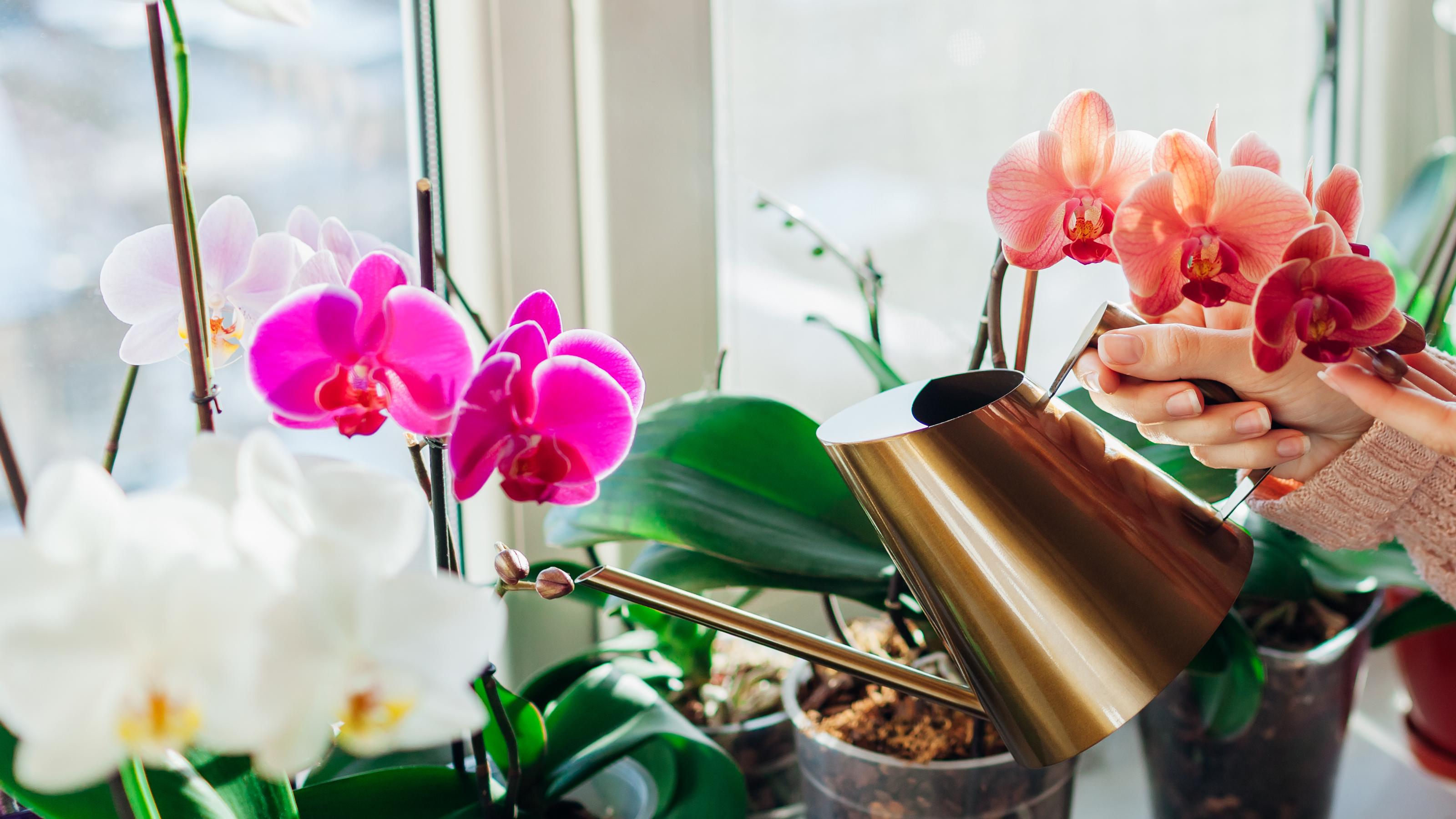

Camille Dubuis-Welch
Beautiful, exotic and long-lasting, with delicate flowers and glossy leaves, orchids add an elegant splash of color to any home. As tropical plants, they have a reputation for being tricky to grow, and knowing how to water orchids properly is of course, a fundamental part of keeping them alive and thriving.
From what type of water to give them, to when and how to hydrate these plants, it may come as a surprise that caring for orchids can be easier than you think. That is of course, when you know what you're doing!
Because although they make some of the best and most beautiful indoor plants, orchids are naturally found outdoors, in tropical forests and semi-desert regions.
‘The second largest family of flowering plants in the world, orchids occur on every continent except Antarctica, with well over 25,000 different species, and many new varieties being discovered each year,’ explains Tom Hart Dyke, curator of the orchid house at Lullingstone Castle in the UK, home to 200 different orchids.
‘The most common pot plant though is Phalaenopsis (moth orchid), and this is the one you’re most likely to pick up in florists or garden centres.’ David McLaughlin, orchid expert at RHS Garden Wisley, who looks after a collection of over 3,000 orchids from all over the world notes how ‘Phalaenopsis has been specifically bred for the house, so is actually fairly straightforward to care for.' Especially when it comes to their watering needs. Positive we're sure you'll agree.
'Some other, less common varieties are more sensitive, so you’ll need to check the label for advice, or talk to the nursery or garden center where you bought them.' Continues McLaughlin saying however that provided their basic care and watering needs are met, these plants will usually be happy anywhere, making good kitchen, living room and even bathroom plants. On that note, this is how to make sure you are watering your orchids properly:
1. Customize your watering pattern
As with all plants, watering times vary depending on the plant and the temperature of your home, but David McLaughlin, orchid expert at RHS Garden Wisley says that as a general guide, ‘Around once a week throughout the year is best, although you do need to pay a little attention to the seasons, and extend this to every ten days to two weeks in the winter. Don’t water it daily, as the main thing is not to let it stand in water for too long. Doing that will drown the roots and slowly kill it.’
Leung adds how watering orchids once a week, in general, is fine but to notoriously 'study how fast they get dry first before determining the frequency they need water. The main reason why watering schedules may be different is that our home environment is different. Some are easily getting hot while others are sensitively cold.'
2. Favor rainwater over tap water
So, can you just use ordinary tap water from a faucet to give your orchid its weekly drink, as you would with when caring for other houseplants?
Old Chinese Feng Shui expert Clara Leung who owns Clara’s Green House, an online Facebook Marketplace shop where she sells plants with homemade soil and planters says that when keeping potted orchids you actually want to water them with 'Warm tap water only!' To not shock the roots of these tropical plants.
McLaughlin on the other hand disagrees at least, saying it shouldn't be done regularly. ‘The best water to use is actually rainwater,’ he explains. ‘Orchid roots have pores to help them absorb carbon dioxide and oxygen and do all the plant-y things that keep them healthy. Tap water, particularly in hard water areas, contains salts that can clog up these pores over time, eventually stopping the orchid from breathing.’ Using water that’s been treated with a water softener, or put through a mineral filter is also not a good idea. ‘Then you’re just exchanging one type of salt for another,’ explains David.
‘Collect rainwater in a water butt, or put a bucket outside on rainy days and pour what you collect into a bottle to use for your orchids,’ suggests botanist Dr Chris Wood, who gives advice as @thebotanistdad on Instagram. ‘Alternatively, as orchids prefer water that’s room temperature, if you do have to use tap water occasionally, let a glass sit for 24 hours before you use it. That way, if you live in an area where there’s a lot of chlorine in the water, most of this should also dissipate, which will make it better for your plants.’
So if you can't access rainwater, save water from the tap and keep it at room temperature for best success.
3. Plunge them in water
Believe it or not, the best way to water an orchid is not to simply pour water into the top of its pot, but rather to give it a good long weekly drink. ‘Plunge your orchid’s pot in a sink or bowl of water for around ten to fifteen minutes, and make sure the soil or compost gets thoroughly soaked,’ says Dr Wood. ‘Then lift up the pot and let any excess water drain out through the holes in the bottom of the pot. Once it’s well drained, place it on a saucer of gravel or, if you’re using a decorative outer pot, put some gravel in the bottom and sit the orchid’s pot on that. This will help air circulate around it and make sure any unwanted water drains away.’
Leung adds: 'When watering them I take them out from a decorative planter and watch when watering them. Stop when water comes from drainage at the bottom. Leave them in the sink, let the water completely come out, and then put them back into a decorative planter.' Continues Leung. 'Yes orchids need more care than other plants in fact.'
4. Mist orchids only in warmer months
You may have seen advice telling you to spritz orchids with a fine water spray, and this is a good idea, says McLaughlin, but only in the warmer months. ‘In the wild, orchids grow on trees or in forests and there’s a vast amount of air floating across them all the time. By misting your plants, you’re trying to mimic that humid air,’ he reveals.
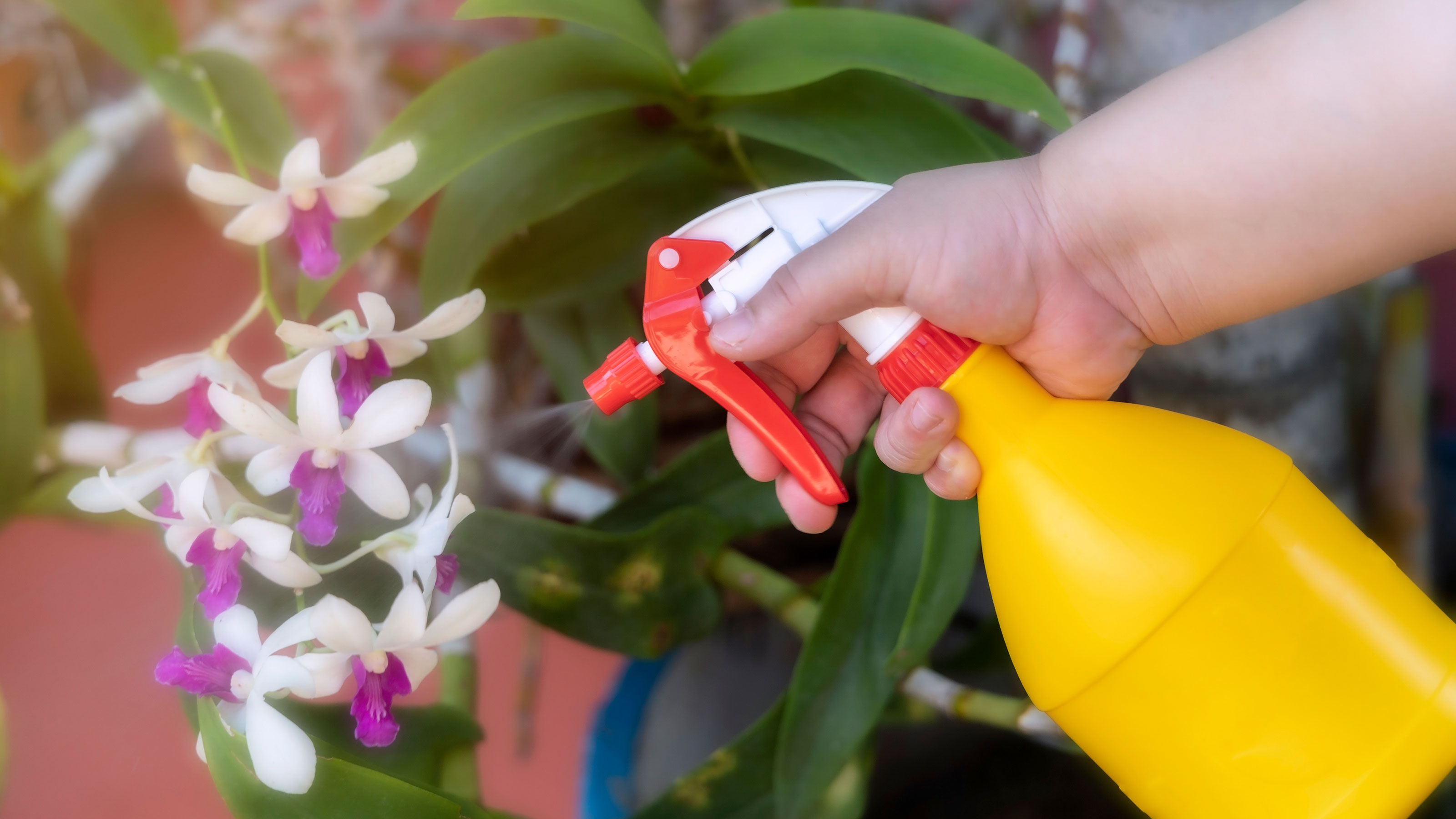
‘However, as the golden rule is not to let your orchid get soggy, you should only do this in spring, summer and fall, when it’s a bit warmer. If you do it in winter, the mist is likely to sit around on the plant, making it permanently wet and potentially damaging it.’ Use a nice glass plant mister for eco-friendly bonus points.
5. Add the right orchid tonic
To give your orchid a boost of nutrients, try adding a little orchid feed tonic occasionally to the water you soak it in, such as Westland Orchid Feed available on Amazon.
Alternatively, if you don’t have a specialist orchid tonic to hand, ‘You can feed it once a month with a tomato food like Tomorite’ says Tom Hart Dyke, ‘Just dilute it to one-fifth of the recommended strength.’
You can also give your orchid a feed when misting it. ‘It’s possible to buy ready-mixed orchid sprays that both feed and mist at the same time, to make the job easier,’ explains Dr Wood. Try Baby Bio Orchid Feed & Mist for an inexpensive option.
How will I know when my orchids needs more or less water?
It’s fairly easy to spot if you’ve been overwatering your orchid, says McLaughlin. ‘Orchids have fleshy leaves that have adapted to being in humid atmospheres most of the time, however if you over-water them, pustules will appear on the surface of the leaves, which will burst, leaving brown spots.’
The signs of under-watering an orchid are a little more subtle. ‘A healthy orchid leaf should be fairly firm along its length, and firm but a little more flexible across the width. If you haven’t been giving it enough water, the leaf will feel limp, or will bend a lot more easily, or you may see wrinkles along the length, caused by the veins inside contracting as they desperately try to absorb water.’
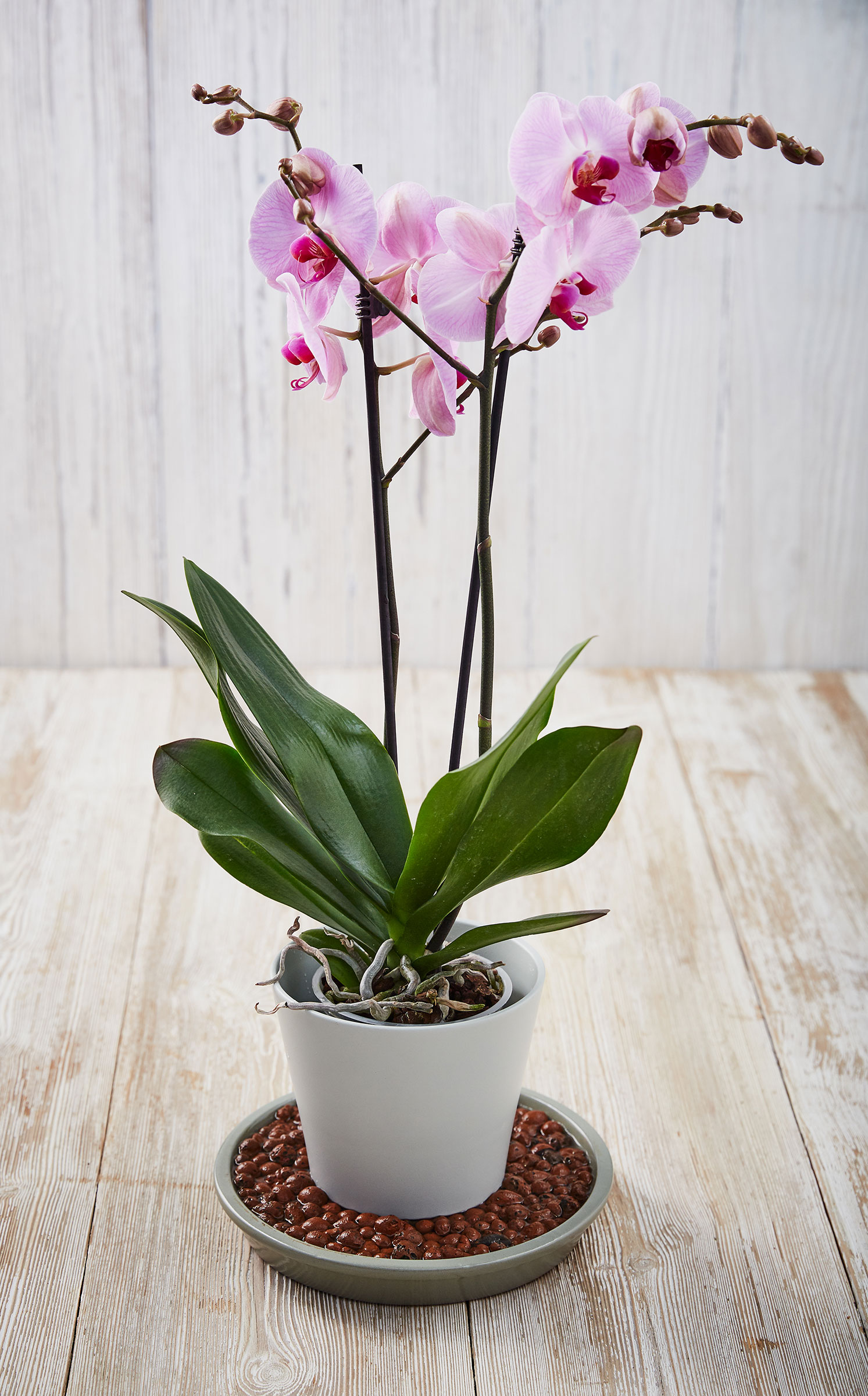
Placement can play a part in how well your orchids retain water also, McLaughlin says 'orchids tend to like an even temperature and partial shade, I just wouldn’t keep them in a conservatory, where there’s a risk of the leaves getting scorched by the sun.’ Adds McLaughlin.
Leung adds to 'Place them near the window or in an area where lots of bright but indirect sunlight visits.'
Join our newsletter
Get small space home decor ideas, celeb inspiration, DIY tips and more, straight to your inbox!

Jenny has been a features and lifestyle journalist for over 20 years and writes about homes and gardens for national newspapers and magazines such as the Daily Mail, Good Homes and Easy Gardens as well as for Realhomes.com. When not writing about homes, she’s helping redecorate them as an interior designer at Decorbuddi.com, tackling everything from bedroom revamps to kitchen renovations. Jenny believes you can never have too much colour, cushions or cacti, and has a particular soft spot for terrazzo.
- Camille Dubuis-WelchFormer Deputy Editor
-
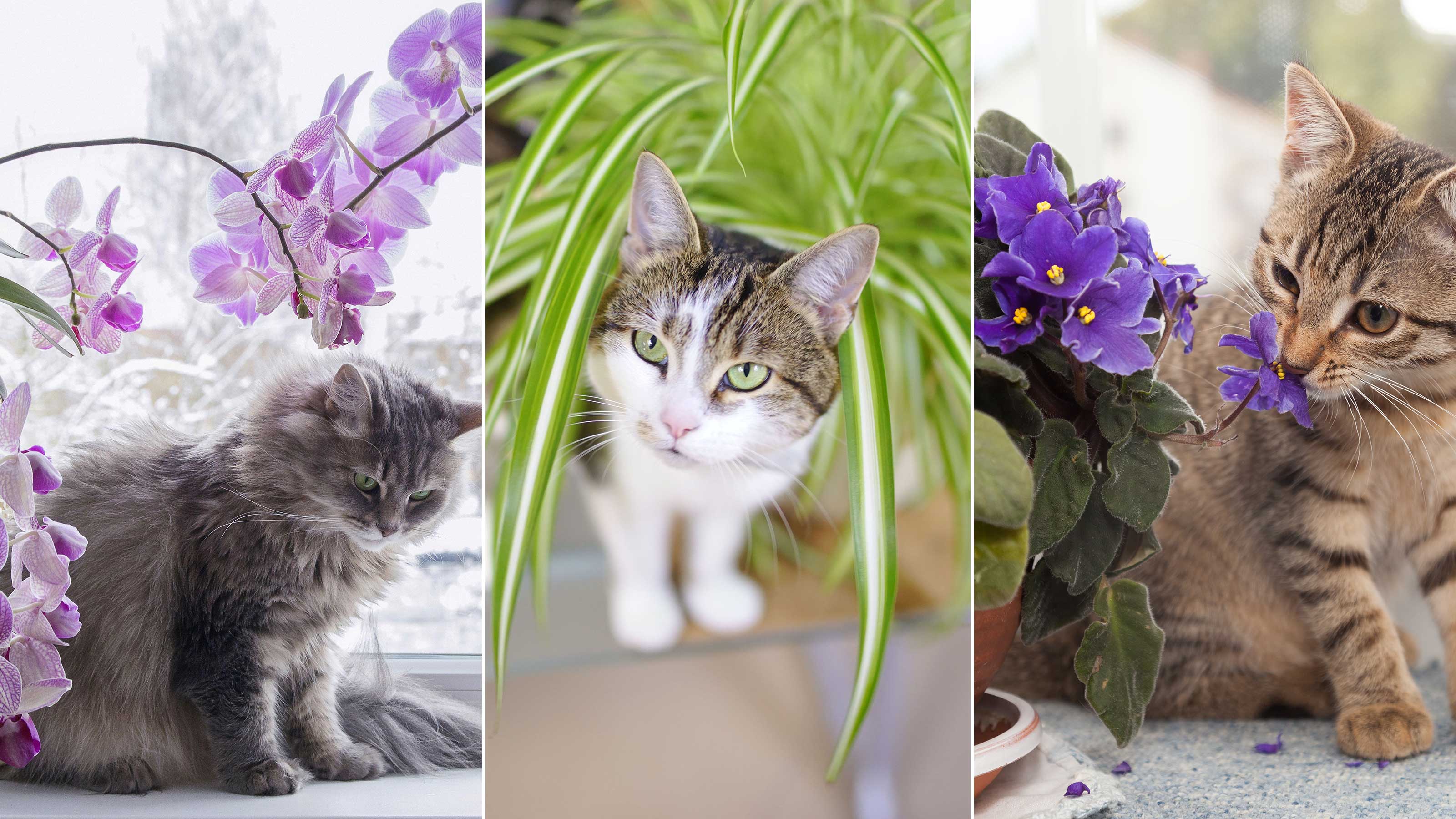 10 houseplants that are not toxic to cats — plus expert advice on keeping your pets safe
10 houseplants that are not toxic to cats — plus expert advice on keeping your pets safeKeep your four-legged companion safe by choosing these houseplants that are not toxic to cats, and learning the dangers of those that are, according to veterinary experts
By Holly Crossley
-
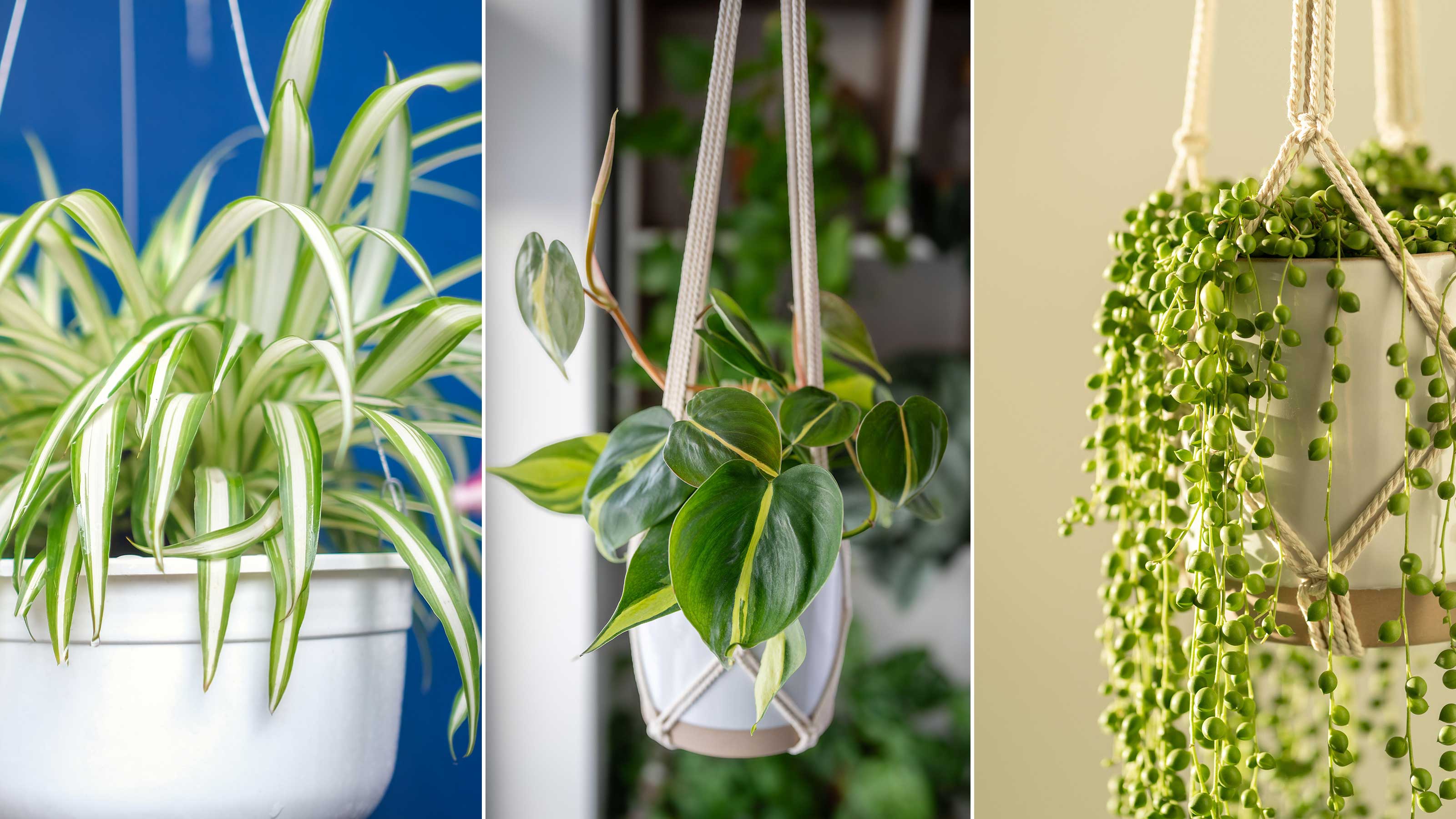 Best hanging basket houseplants — 10 leafy options for maximizing vertical space
Best hanging basket houseplants — 10 leafy options for maximizing vertical spaceDiscover the best hanging basket houseplants for elevating empty spaces in your home, as well as expert tips on how to keep them looking their best
By Holly Crossley
-
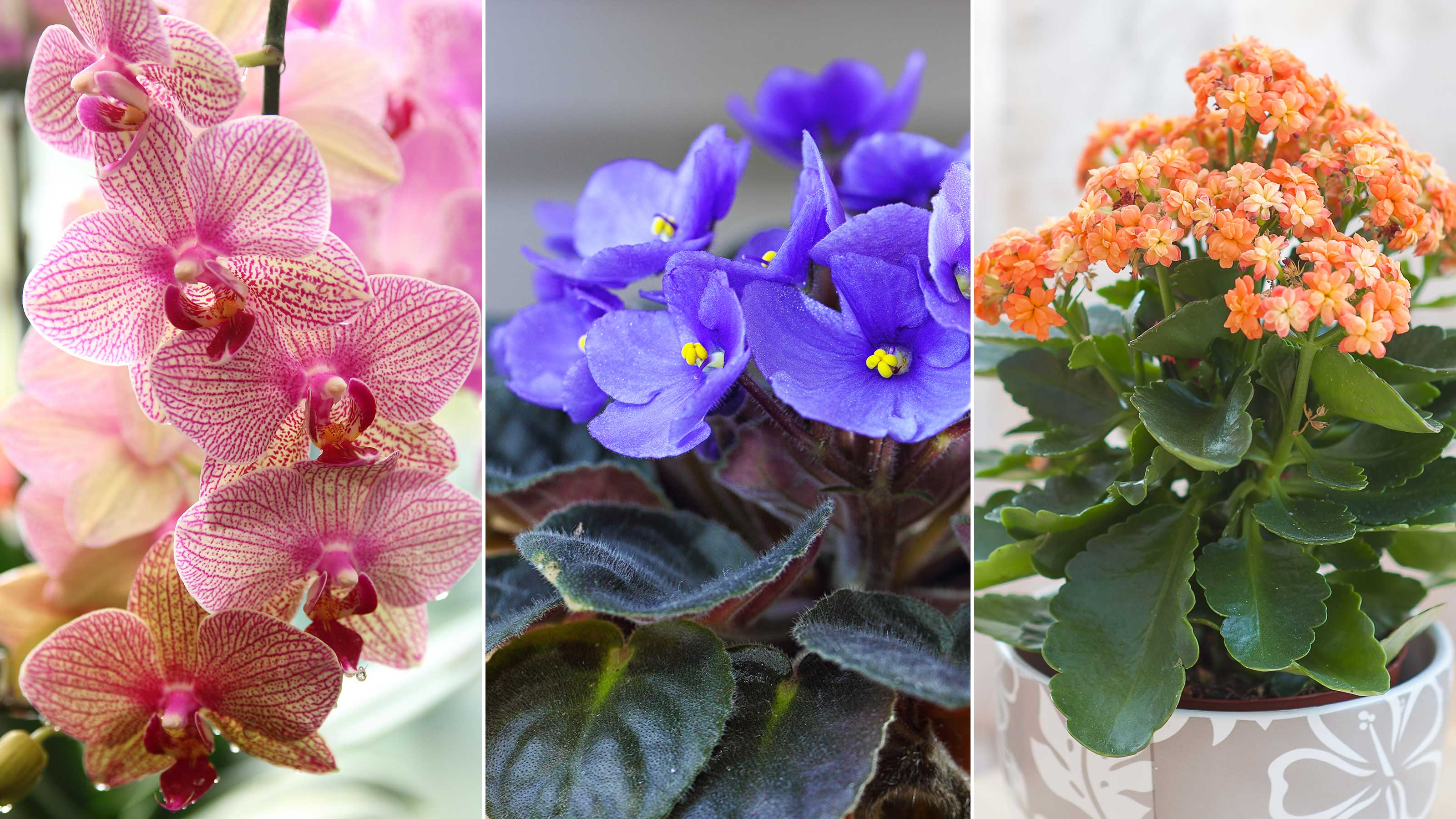 The 10 best indoor flowering houseplants to bring natural beauty to your space — including ones that blooms for months
The 10 best indoor flowering houseplants to bring natural beauty to your space — including ones that blooms for monthsThese are the best indoor flowering houseplants to beautify an interior scheme, plus expert advice on plant maintenance and styling
By Holly Crossley
-
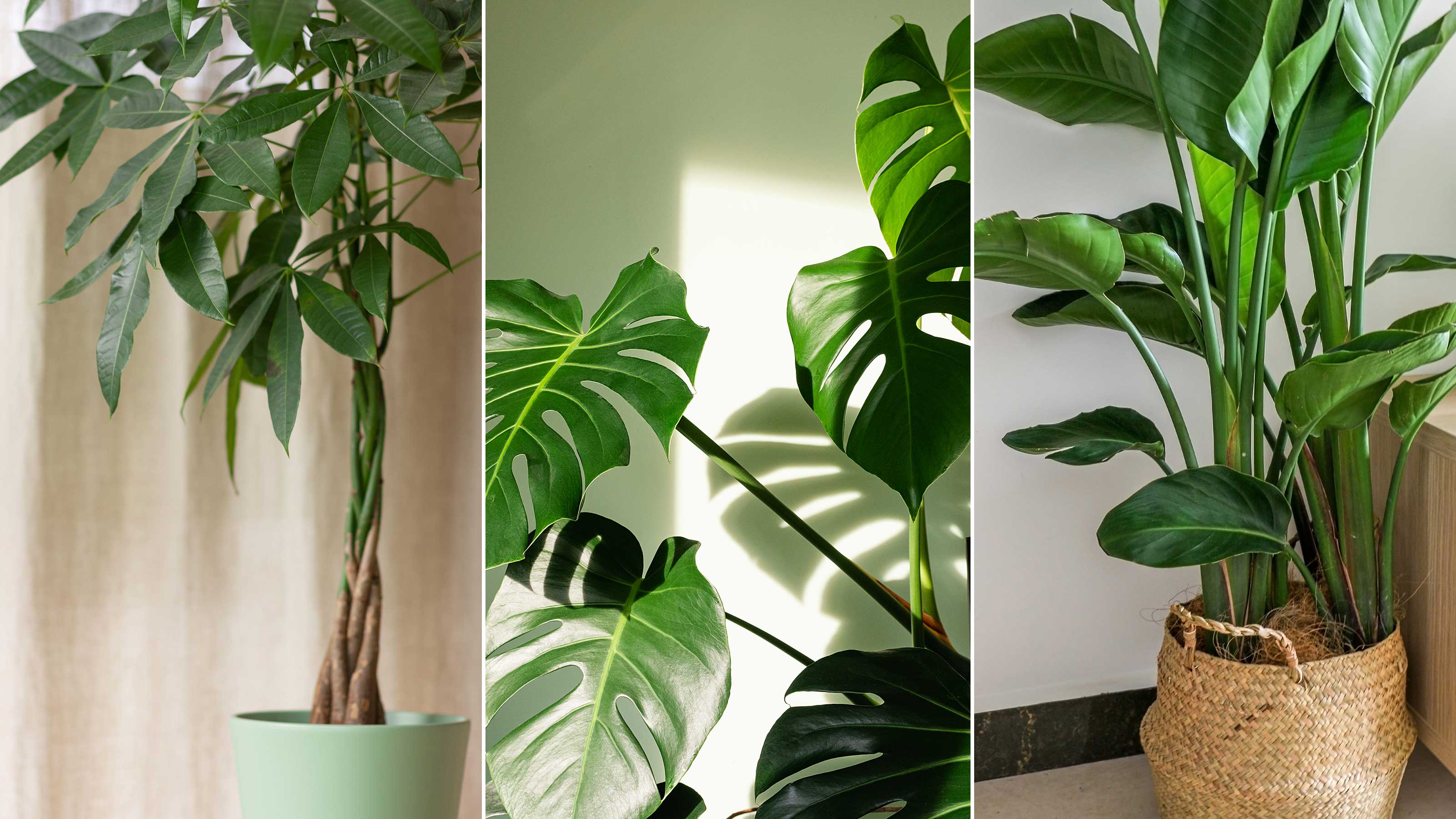 Best tall houseplants — 10 lofty options for indoor spaces
Best tall houseplants — 10 lofty options for indoor spacesThe experts reveal the best tall houseplants for a beautifully botanical interior scheme, plus practical tips on how to care for them
By Holly Crossley
-
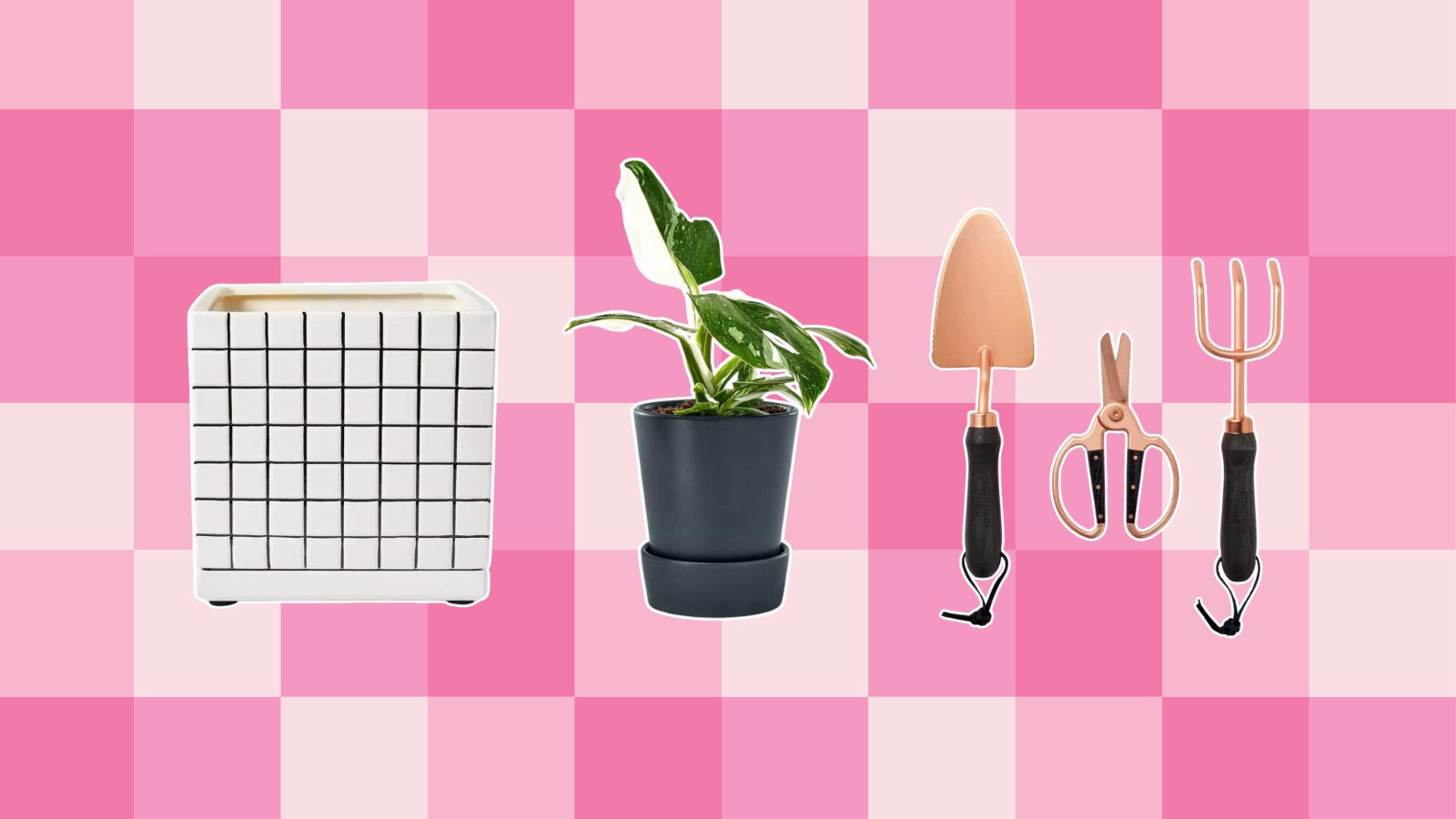 The new Hilton Carter Target line is every plant parent's dream — shop our favorite picks from $20
The new Hilton Carter Target line is every plant parent's dream — shop our favorite picks from $20The new Hilton Carter Target line is here and complete with live plants, cute decor, and handy tools. Shop our favorite picks from $20
By Danielle Valente
-
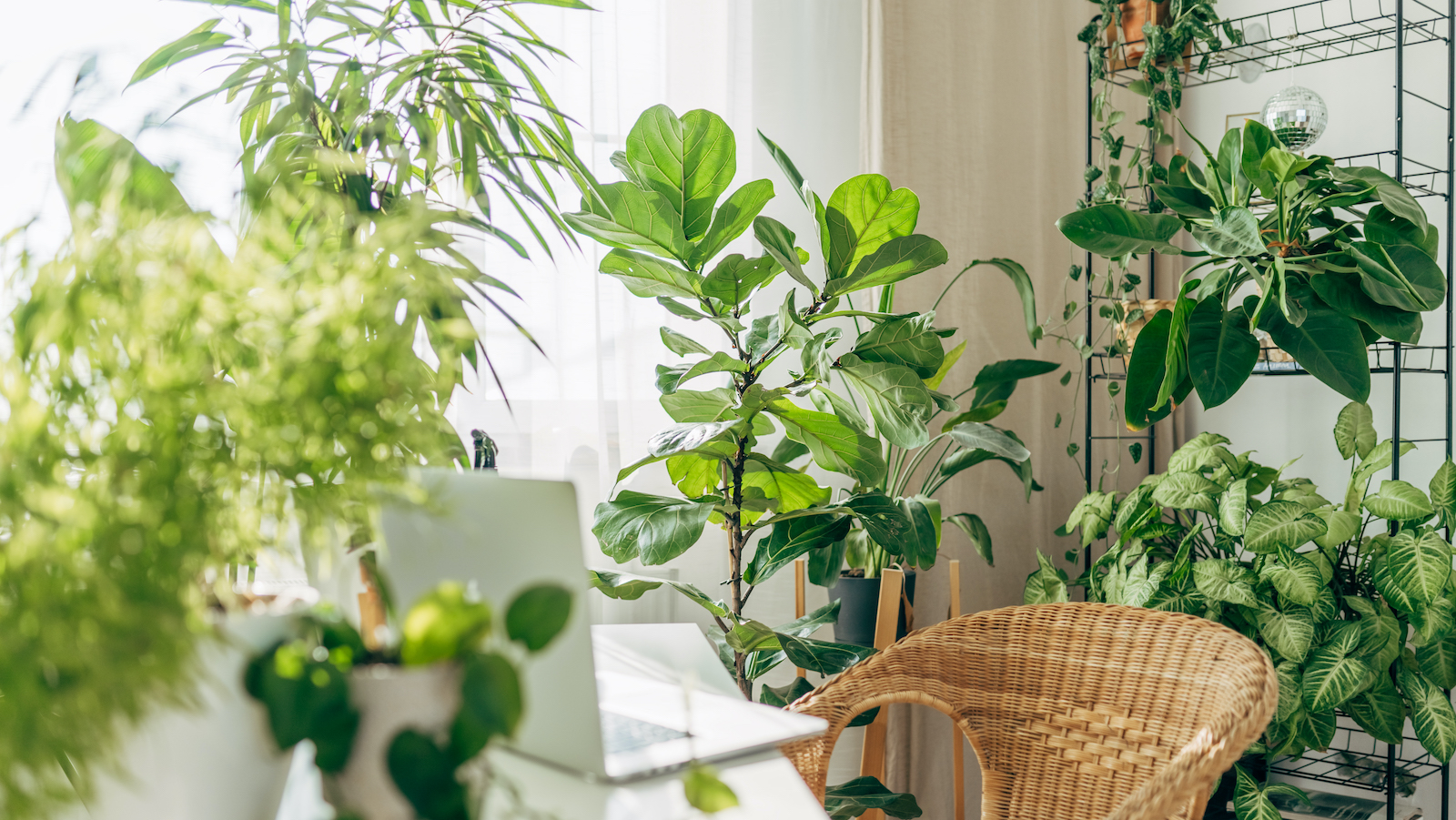 How to pollinate indoor plants — gardening experts spill their best tips
How to pollinate indoor plants — gardening experts spill their best tipsCurious how to pollinate indoor plants and when it is necessary? Let our gardening experts break it all down
By Danielle Valente
-
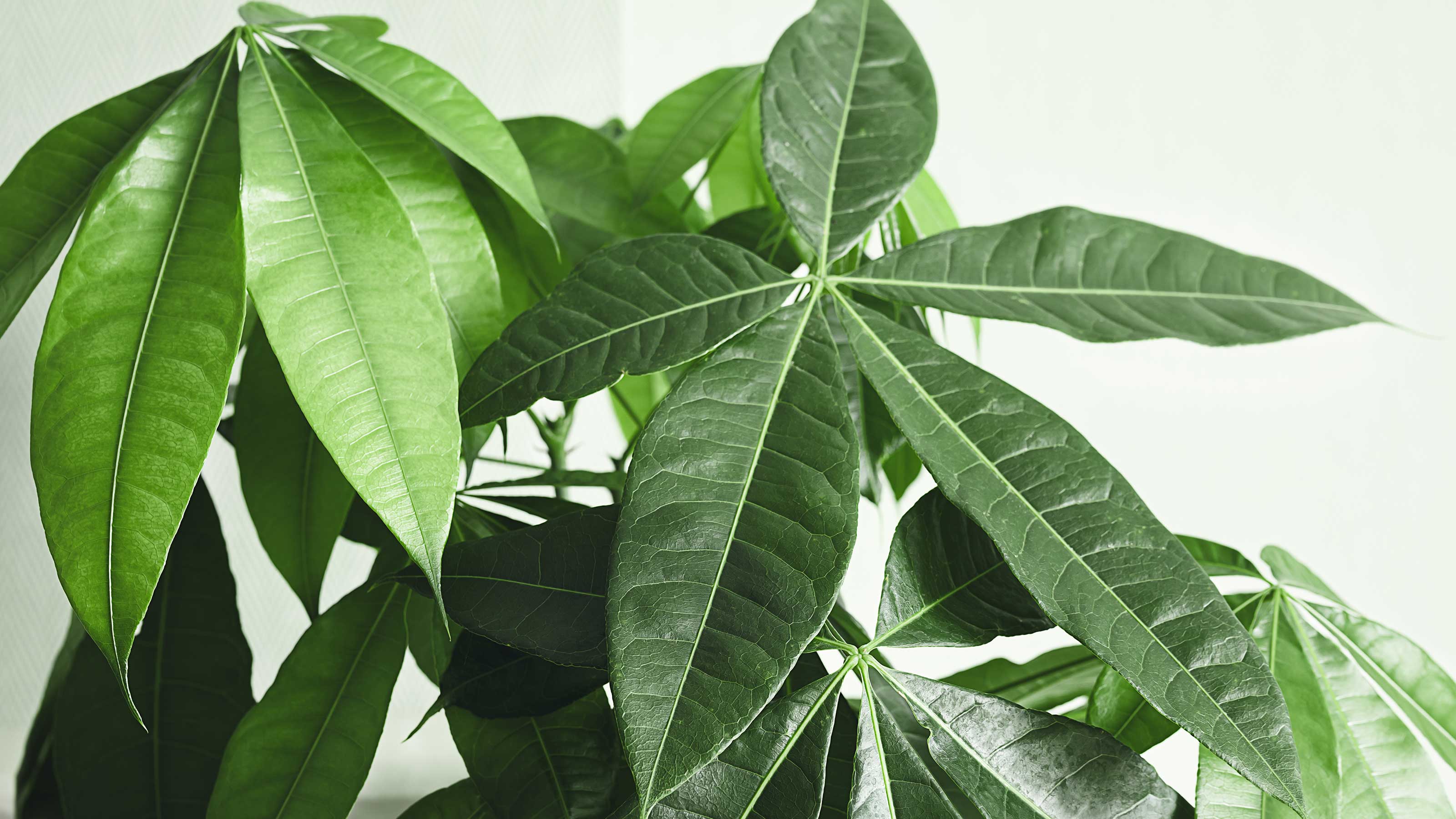 How to care for a money tree — 7 tips for thriving indoor plants
How to care for a money tree — 7 tips for thriving indoor plantsThe experts share top advice on how to care for a money tree, including practical tips for watering, soil type, and pest control
By Holly Crossley
-
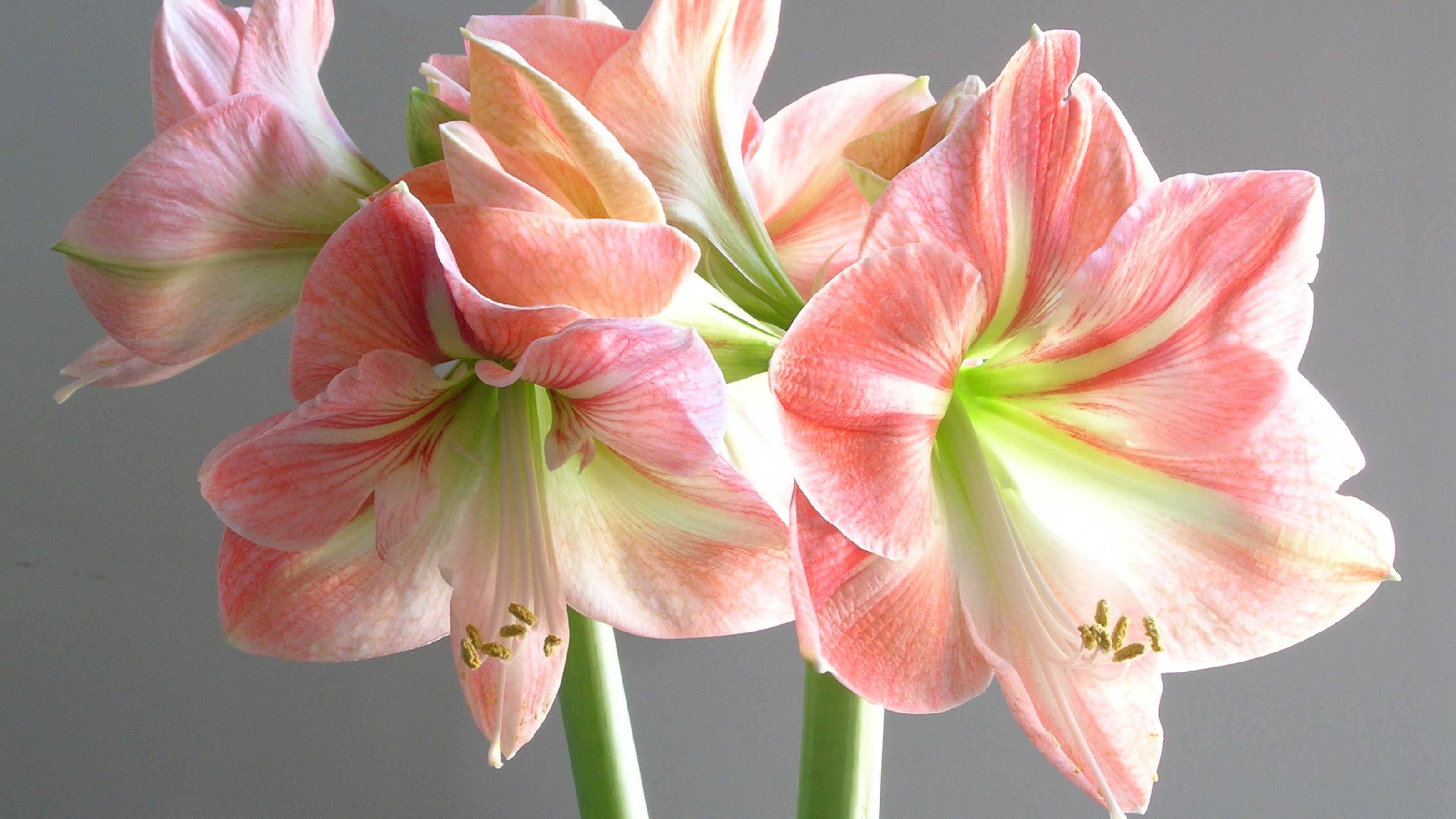 How to care for amaryllis — 9 tips for these fabulous flowering bulbs
How to care for amaryllis — 9 tips for these fabulous flowering bulbsLearn how to care for amaryllis with this practical guide, including expert-approved info on pruning, propagating, and whether you can move them outdoors
By Holly Crossley